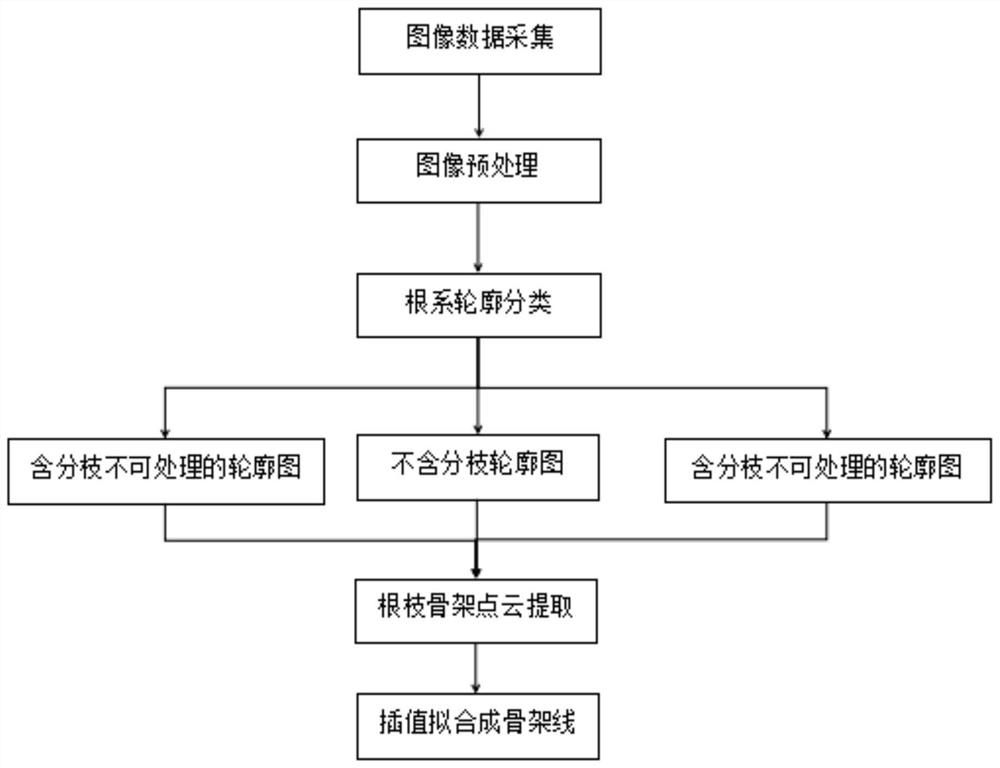A skeleton extraction method of plant root branching characteristics
A technology for extracting plant roots and skeletons, applied in interdisciplinary fields, can solve problems such as easy errors at bifurcation points, and achieve the effect of eliminating influence
- Summary
- Abstract
- Description
- Claims
- Application Information
AI Technical Summary
Problems solved by technology
Method used
Image
Examples
Embodiment
[0055] In this embodiment, a method for extracting the skeleton of plant root branching features is a data processing process based on the above-mentioned image data after obtaining the tomographic sequence image data of the plant root system using tomographic imaging technology, combined below figure 1 , detailing each step of the process.
[0056] 1. Image acquisition;
[0057] The image used in this example is a sequence of images obtained by industrial XCT scanning of the root system. The image is a cross-sectional view of the root system in the form of a slice, and the imaging characteristics are related to the depth of the slice and the angle of the root and the X-ray. Select the appropriate slice depth and root placement angle, and then remove impurities such as soil matrix through the segmentation technology in image processing, and obtain the binarized CT sequence map of the root system.
[0058] 2. Image preprocessing;
[0059] Since the root outline sequence map ...
PUM
 Login to View More
Login to View More Abstract
Description
Claims
Application Information
 Login to View More
Login to View More - Generate Ideas
- Intellectual Property
- Life Sciences
- Materials
- Tech Scout
- Unparalleled Data Quality
- Higher Quality Content
- 60% Fewer Hallucinations
Browse by: Latest US Patents, China's latest patents, Technical Efficacy Thesaurus, Application Domain, Technology Topic, Popular Technical Reports.
© 2025 PatSnap. All rights reserved.Legal|Privacy policy|Modern Slavery Act Transparency Statement|Sitemap|About US| Contact US: help@patsnap.com



